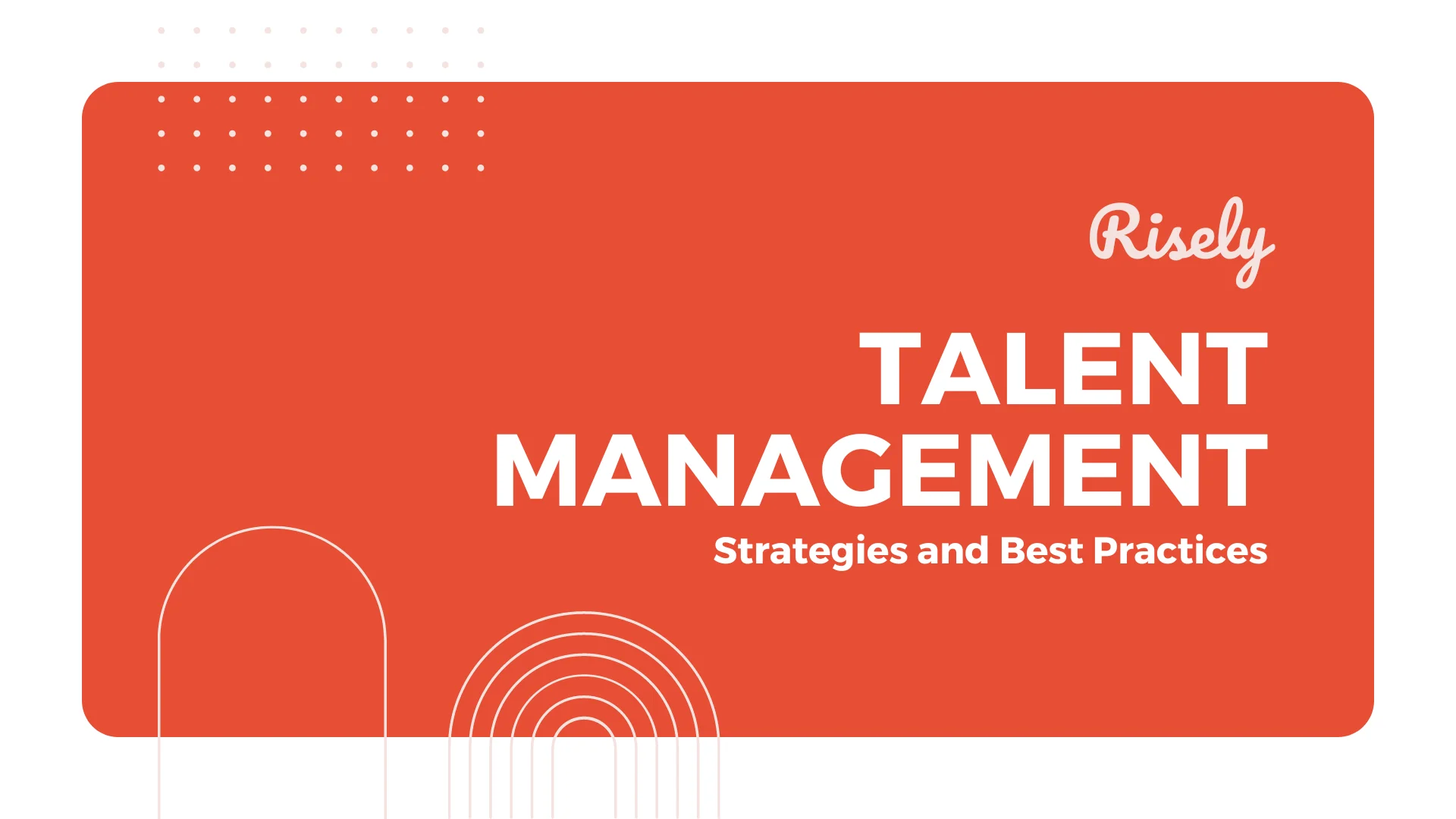The talent pipeline advantage: How it boosts employee retention and engagement?
In today’s fiercely competitive business landscape, managers understand that talent is their most valuable asset. A robust talent pipeline is not just a buzzword but a strategic imperative for success. A talent pipeline ensures a steady flow of qualified individuals ready to step into key roles, driving innovation, growth, and team resilience. In this blog, we will discuss talent pipeline management, explore its significance and share valuable insights on how to build and nurture a thriving pipeline for talent. Keep reading to unlock the secrets to attracting, developing, and retaining top talent, and discover how a well-crafted talent pipeline can propel your team toward sustainable success.What is a talent pipeline?
A talent pipeline is a strategic approach for identifying and developing a pool of potential candidates with the necessary skills and qualifications to fill key positions within a team. It involves proactively sourcing and nurturing talented individuals internally and externally to ensure a steady supply of qualified candidates for future roles. The talent pipeline serves as a long-term talent management strategy that helps managers address succession planning, reduce hiring gaps, and maintain a competitive edge in the market.Benefits of a talent pipeline
The benefits of a talent pipeline include- Proactive succession planning: It allows managers to identify and groom potential successors for key positions, ensuring a smooth transition when vacancies arise.
- Reduced recruitment costs: By cultivating a pool of internal candidates, managers can minimize their reliance on external recruitment and associated costs.
- Faster time-to-fill: With a pipeline, managers can quickly fill open positions with qualified candidates, reducing the time and effort spent on sourcing and hiring.
- Enhanced retention and engagement: Employees who see clear development and advancement opportunities through a talent pipeline are likelier to stay with the team, leading to higher retention rates and increased employee engagement.
- Improved workforce agility: It enables managers to adapt to changing business needs and fill critical roles more efficiently, enhancing their overall agility and responsiveness.
- Reduced risk of talent shortages: By proactively identifying and nurturing talent, managers can mitigate the risks of talent shortages and ensure a steady supply of skilled individuals for future needs.
- Increased leadership development: It allows managers to identify high-potential individuals and provide targeted development opportunities to groom them for leadership roles.
- Enhanced employer brand: Demonstrating a commitment to talent development and offering advancement opportunities through a pipeline for talent supply can strengthen a manager’s employer brand, making it more attractive to top talent.
- Improved team performance: A well-managed talent pipeline ensures that the right people are in the right roles at the right time, contributing to overall team performance and productivity.
- Long-term sustainability: By investing in a continuous talent supply line, managers can secure long-term sustainability by cultivating a pipeline of capable, skilled individuals who can drive future growth and success.
Other Interesting Reads
How to build and manage a talent pipeline?
Building and managing a talent pipeline involves several key steps:- Identify key roles and skills: Determine which roles within your team are critical for success and identify the key skills and competencies required for those roles.
- Assess current talent: Evaluate your existing workforce to identify individuals with the potential and willingness to develop into future leaders or fill key positions. This can be done through performance evaluations, competency assessments, and talent reviews.
- Develop a talent development strategy: Create a comprehensive strategy outlining the specific actions and initiatives required to build a robust pipeline. This may include mentoring programs, training and development opportunities, job rotations, and leadership development programs.
- Attract external talent: While internal talent development is important, attracting external talent to supplement your talent pipeline is essential. Use targeted recruitment strategies to attract individuals with the skills and potential to fill critical roles in the future.
- Provide continuous learning and development: Offer ongoing learning and development opportunities to individuals in your talent pipeline. This can include training programs, coaching employees in the workplace, mentoring, and access to external resources to enhance their skills and capabilities.
- Create succession plans: Develop succession plans for key roles to ensure a smooth transition when vacancies occur. Identify potential successors and provide targeted development opportunities to groom them for future leadership positions.
- Monitor and evaluate progress: Continuously monitor the progress of individuals in your pipeline. Regularly review their performance, assess their readiness for advancement, and provide feedback and guidance to support their growth.
- Adapt to changing needs: Keep your pipeline flexible and adaptable. Continuously reassess the skills and competencies required for key roles and adjust your talent development strategies accordingly.
- Measure and track success: Establish metrics and key performance indicators (KPIs) to measure the effectiveness of your pipeline. Track the progress of individuals in the pipeline, the success rate of internal promotions, and the impact of your talent development initiatives on team performance.
Best practices for talent pipeline management
Effective talent pipeline management involves implementing best practices to attract, develop, and retain top talent. Some key best practices:- Align with the team: Ensure that your talents aligns with your team’s long-term goals and strategic objectives. Identify the skills and competencies required to drive success in critical areas of your business.
- Continuous talent sourcing: Actively source and engage potential candidates even when no immediate job openings exist. Maintain relationships with passive candidates, industry professionals, and alums networks to expand your talent pool.
- Build a diverse talent pool: Embrace diversity and inclusion in your pipeline. Seek candidates from various backgrounds, experiences, and perspectives to foster innovation and drive business growth.
- Develop internal talent: Invest in developing your existing employees by providing training, coaching, and growth opportunities. Identify high-potential individuals and create tailored development plans to nurture their skills and prepare them for future leadership roles.
- Regular performance assessments: Conduct regular performance assessments and talent reviews to identify high performers, assess their potential, and address any skill gaps. Provide meaningful feedback and career development guidance to nurture their growth.
- Collaboration with hiring managers: Foster collaboration between HR and hiring managers to ensure alignment on talent needs and requirements. Regularly communicate and share insights about potential candidates, skill gaps, and future talent requirements.
- Leverage technology: Use technology platforms and tools to streamline talent acquisition, assessment, and development processes. Applicant tracking systems, talent management software, and learning management systems can help automate and enhance talent management.
Conclusion
As we conclude this blog on talent pipeline management, it becomes clear that managers cannot afford to overlook its significance in today’s dynamic work culture. A well-built and effectively managed talent pipeline is the lifeline that ensures a continuous supply of skilled individuals to meet present and future team needs. From attracting top talent to nurturing their growth and development, a robust pipeline catalyzes innovation, agility, and sustained success. Managers can create a thriving talent pipeline that aligns with their strategic objectives by adopting best practices such as proactive recruitment, talent assessment, targeted development programs, and internal mobility initiatives. This proactive approach enables them to minimize talent gaps, reduce hiring costs, enhance employee engagement, and cultivate a continuous learning and advancement culture.Building a strong talent pipeline is critical to your team’s strategic growth. Are you prepared to get it right?
Start the free strategic thinking skills assessment for managers now to get insights into your skills.
Frequently asked questions
How do you create a talent pipeline?
Creating a pipeline involves several steps, including identifying critical roles and skill requirements, sourcing candidates through various channels, engaging and nurturing potential talent through targeted recruitment efforts, assessing their fit and potential, providing development opportunities, and maintaining ongoing communication to build relationships with prospective candidates.
What is another name for a talent pipeline?
Another term for a talent pipeline is a “succession pipeline” or “succession pool.” These terms refer to the process of identifying and developing a pool of talented individuals who have the potential to fill key roles within a team in the future.
What is the importance of the talent pipeline?
The talent pipeline ensures a team’s long-term success and sustainability. A well-managed talent pipeline helps managers minimize talent gaps, reduce recruitment costs, promote internal mobility, and foster a culture of continuous learning and development.
What is talent pipeline vs. pool?
While “talent pipeline” and “talent pool” are sometimes used interchangeably, there is a subtle difference between them. A talent pipeline refers to a structured and proactive process of identifying, engaging, and developing potential candidates for specific roles within a team, focusing on future needs.
On the other hand, a talent pool is a broader term encompassing a pool of potential candidates who possess desired skills and qualifications, regardless of specific role requirements. Talent pools can be a source for immediate recruitment needs, while talent pipelines are more strategic and long-term focused.
On the other hand, a talent pool is a broader term encompassing a pool of potential candidates who possess desired skills and qualifications, regardless of specific role requirements. Talent pools can be a source for immediate recruitment needs, while talent pipelines are more strategic and long-term focused.
Other Related Blogs
What Is Talent Management? Strategies & Best Practices
What Is Talent Management? Strategies & Best Practices Talent management is not just about filling job vacancies; it’s about nurturing high-performing employees, providing development opportunities, and continuously motivating them to…
Cultural Sensitivity in the Workplace: Top 5 Key Strategies
Cultural Sensitivity in the Workplace: Top 5 Key Strategies Cultural sensitivity is critical for success in this increasingly diverse and globalized workplace. Understanding and respecting different cultures fosters a harmonious…
9 Steps of Talent Management Process made easy for all Managers
9 Steps of Talent Management Process made easy for all Managers Talent management is an essential aspect of any organization’s success. It involves identifying, attracting, developing, and retaining talent to…


